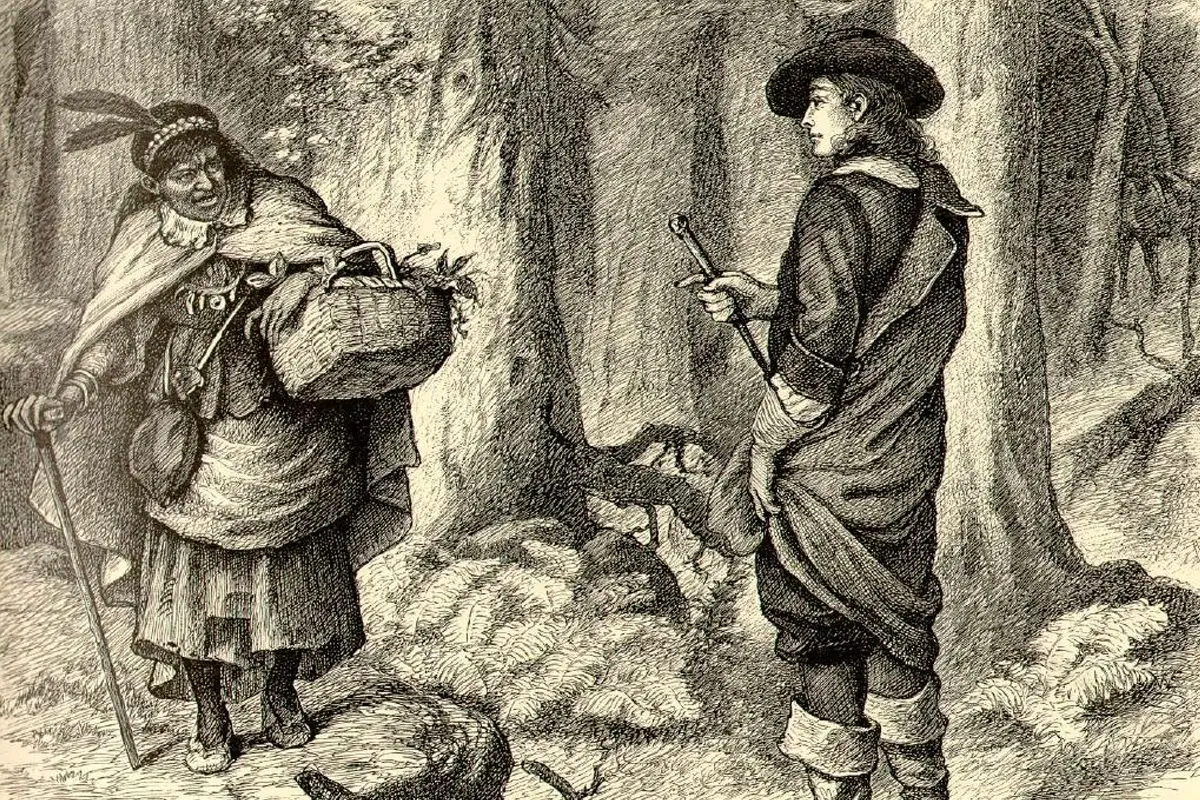The small Puritan town of Salem was the site of one of the darkest times in Massachusetts’ history, where several townsfolk became afflicted by, what could only be described as witchcraft.
The year was 1692. Tituba was a slave owned by Samuel Parris, who inherited her upon his father’s death.
Tituba’s origins are uncertain and she has often been mistaken as an African slave, but it is believed that she was a member of the Arawak tribe in Venezuela and was taken to the Barbados markets to be sold into slavery.
She was purchased by the Parris family who owned a nearby sugar planation, and would eventually sail with Samuel Parris, his wife and three children to Massachusetts. Helping raise the Parris children, Tituba became especially close with the middle child, Betty, and her cousin Abigail.
She would entertain the children with stories of her time living in Barbados, including tales of voodoo magic. The girls, along with other young people from town would often go missing for short periods, believed to be practising harmless fortune telling games to see into their future.
The town’s reverend, Samuel Parris, began seeing changes in the girls, reporting them both having fits, claims of bites from unseen forces, writhing limbs, contortions of their bodies and screams of pain. The local doctor was unable to find any scientific or medical ailment responsible for the girls behaviour, suggesting to Parris that the only explanation is the presence of the devil himself. This infliction appeared to spread, when two friends of the girls started complaining of similar ailments, resulting in a panic amongst the townspeople that witchcraft was at play.
Despite their close relationship with Tituba, Betty and Abigail accused her of being the one responsible for their unexplained behaviour. Tituba first denied the accusations, but was arrested along with two other women in town and eventually confessed to practicing witchcraft.
The confession was likely forced on her by her interrogators (which included Samuel Parris). She told them that the devil came to her and ordered her to perform witchcraft on the town’s young people. Her descriptions of demonic entities were quite elaborate, although those descriptions often changed with every telling of the story.
Tituba accused others of also dabbling in witchcraft. This led to over 200 people being accused and 19 men and women being executed (or dying in prison). She knew the Puritan way and was probably hoping that a confession would repent her sins and save her.
However, Tituba recanted her confession, blaming the harsh interrogation that led her astray. Although she survived execution, Tituba was placed in prison for 13 months and was abandoned by her owner.
She was eventually released and sold to a new owner, but appears to have disappeared from contemporary historical text and remains a mystery of the Salem trials.
Written by Julie St Jean
Header Image Credit : Illustration of Tituba by John W. Ehninger, 1902







